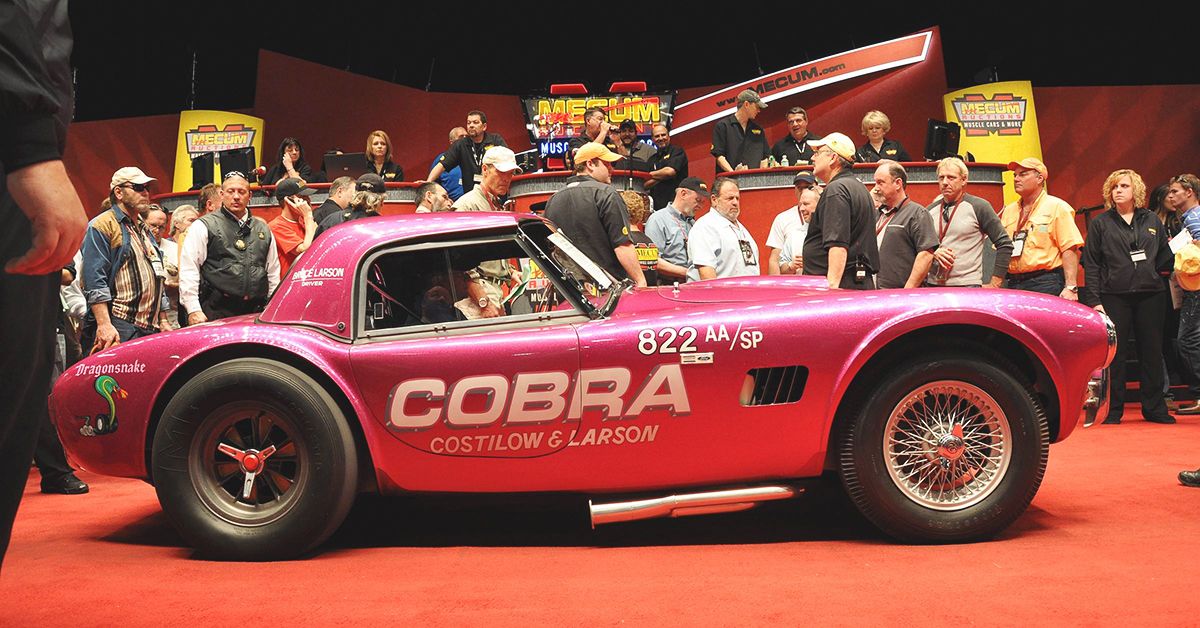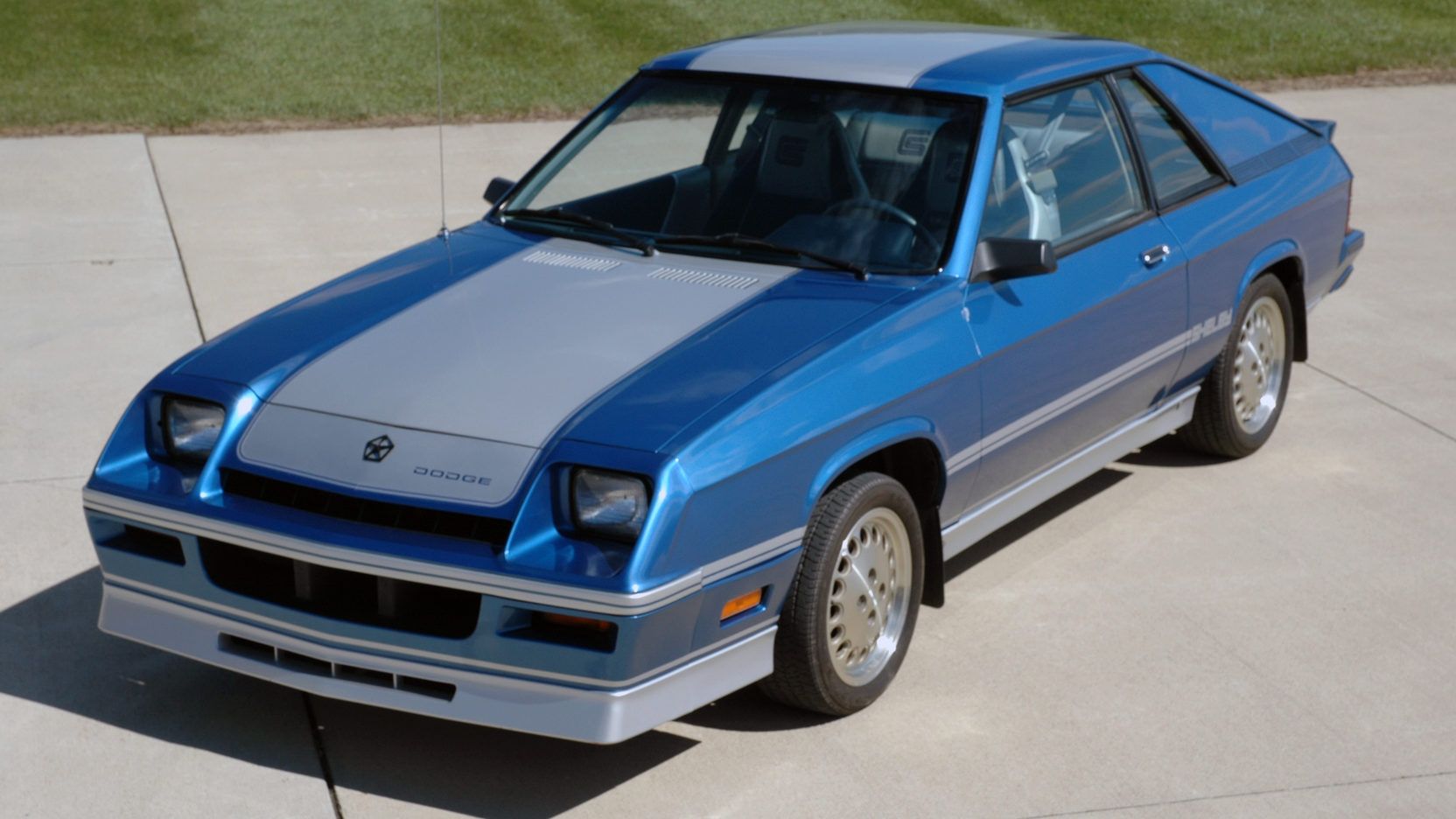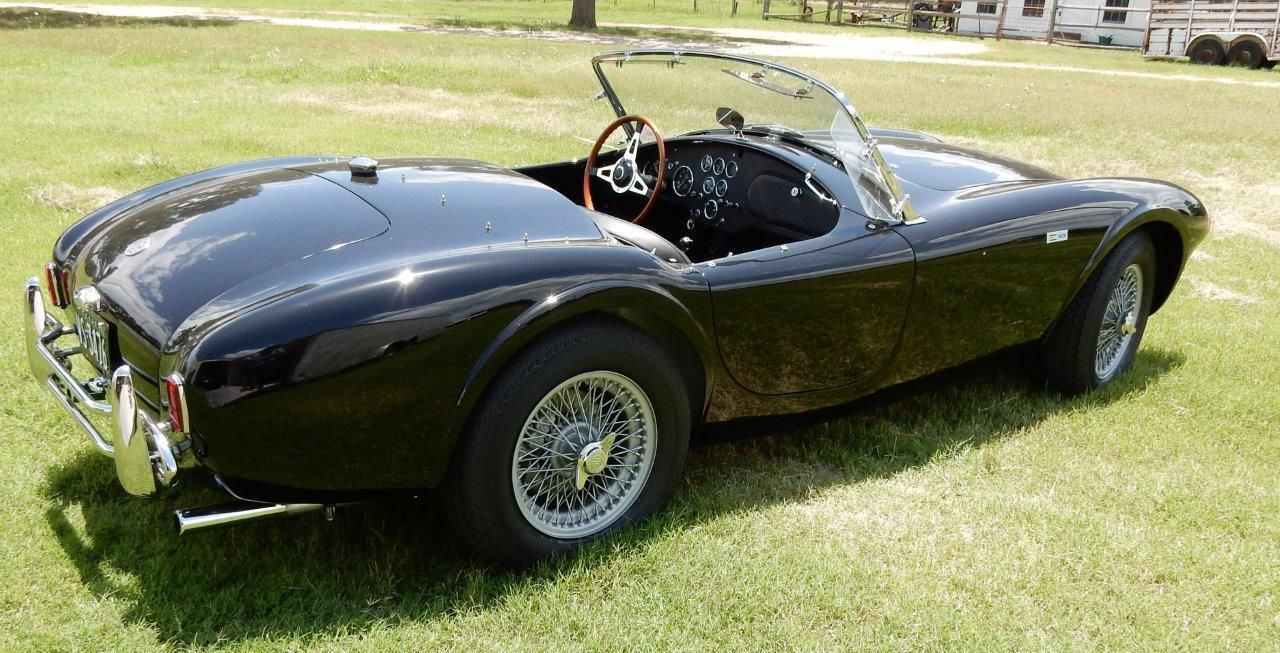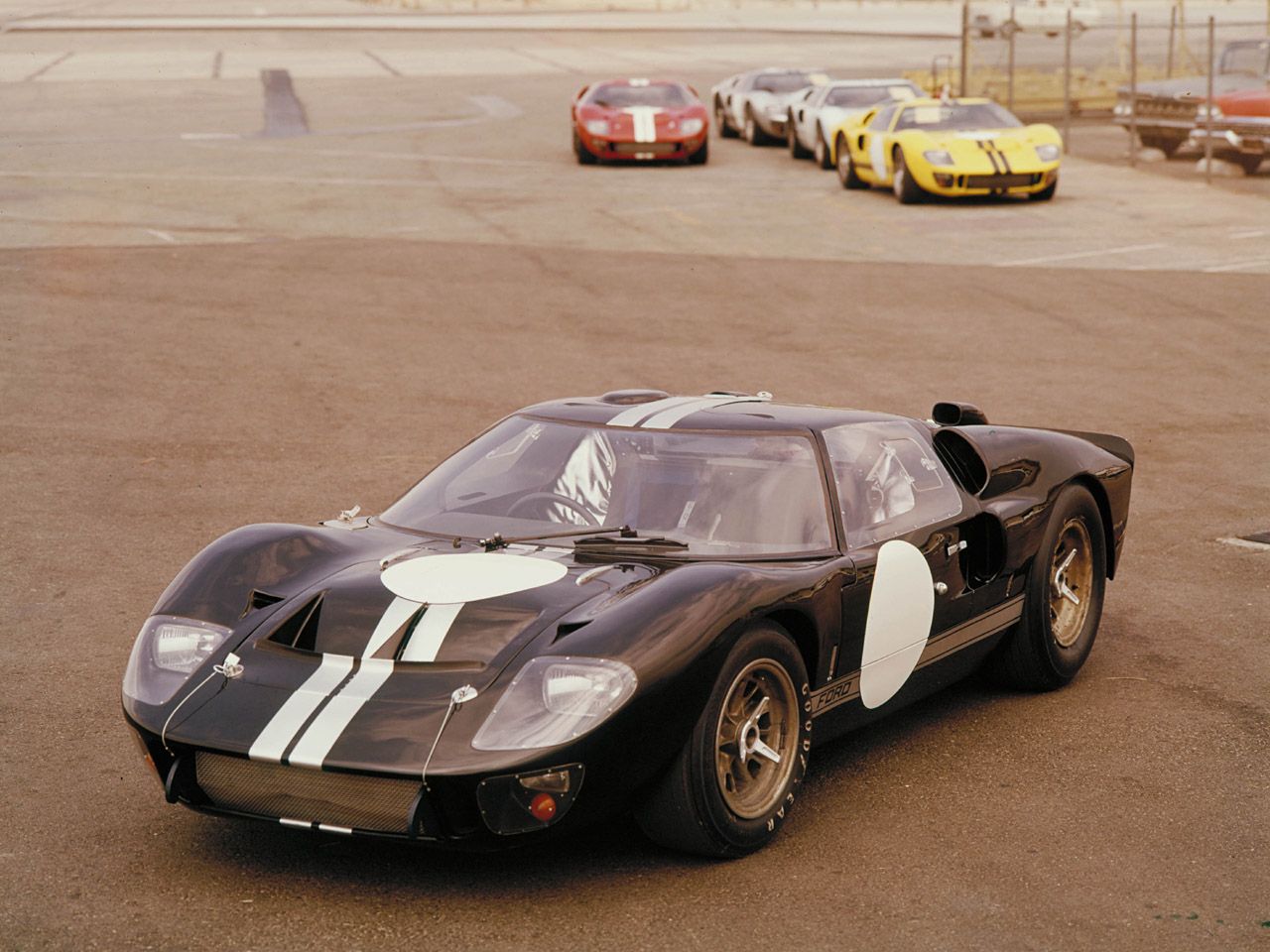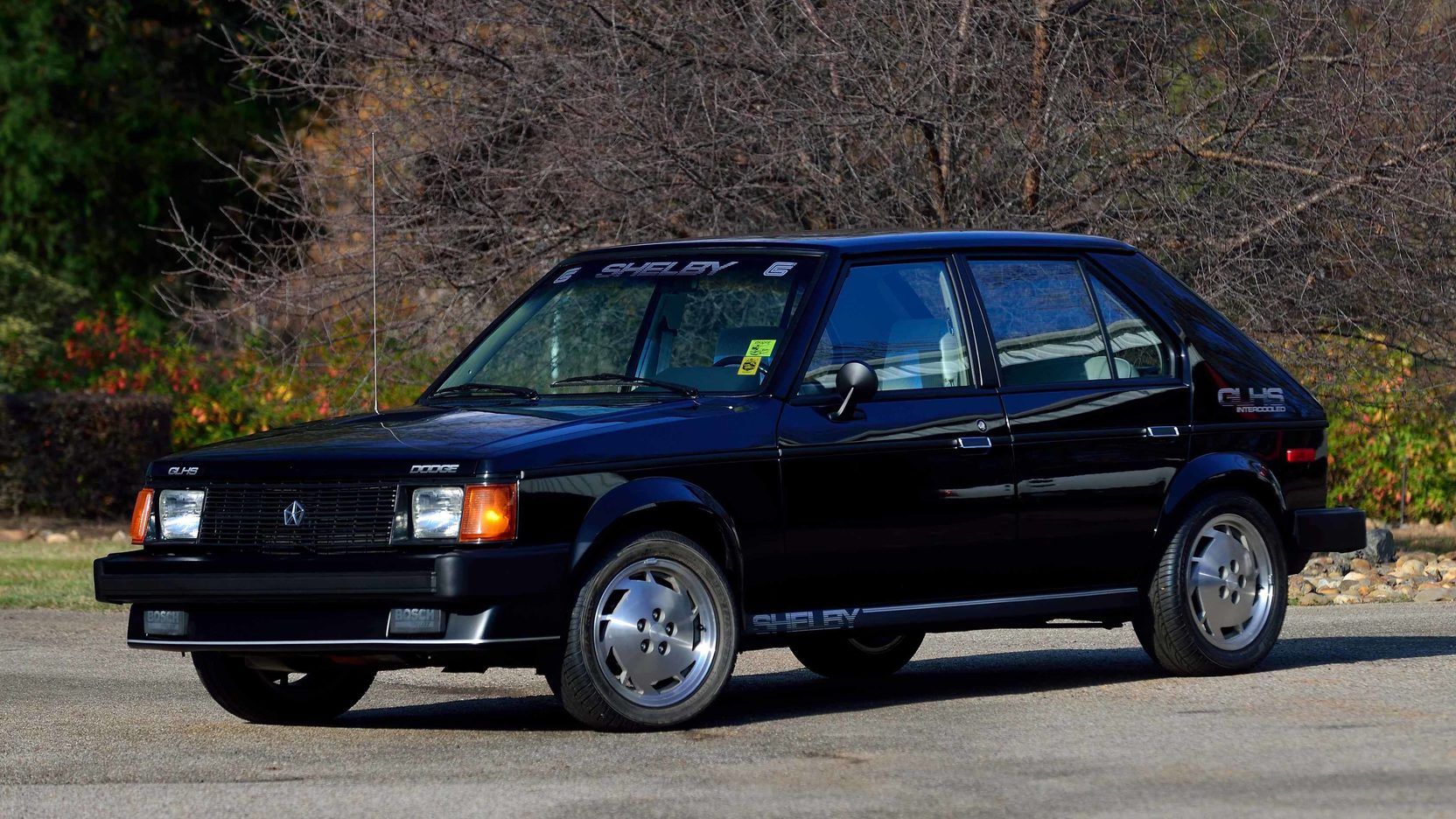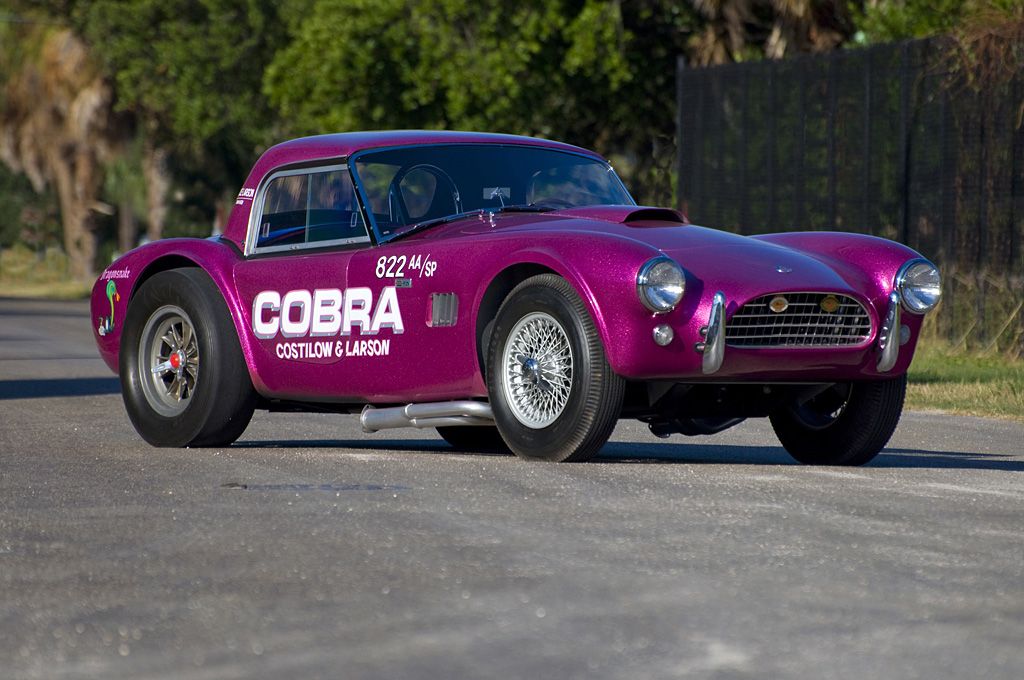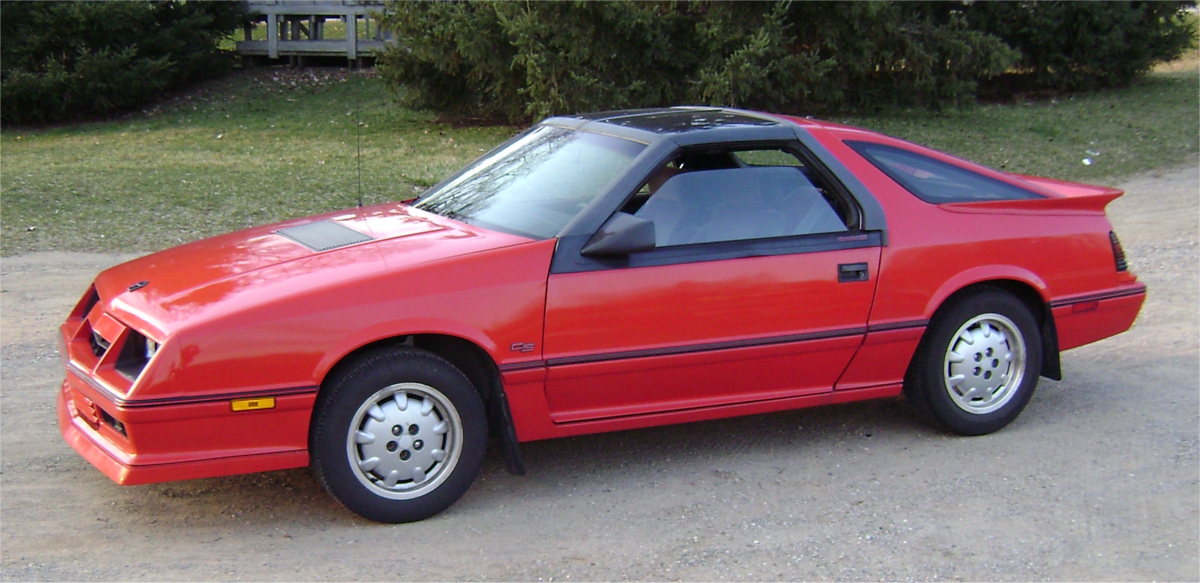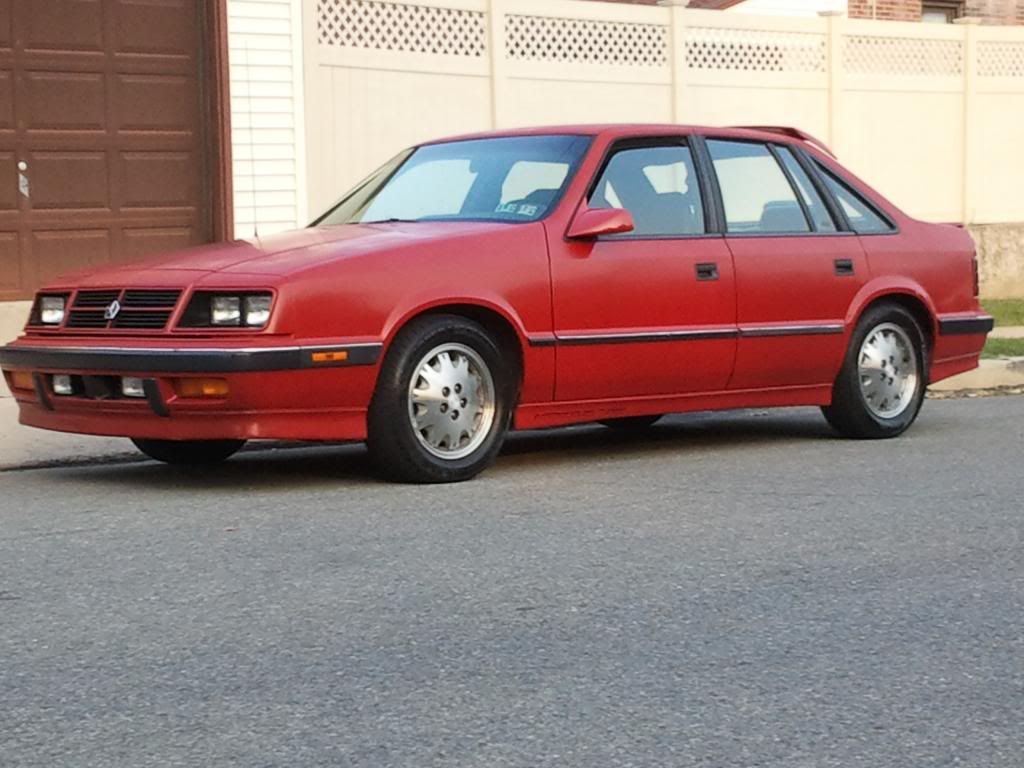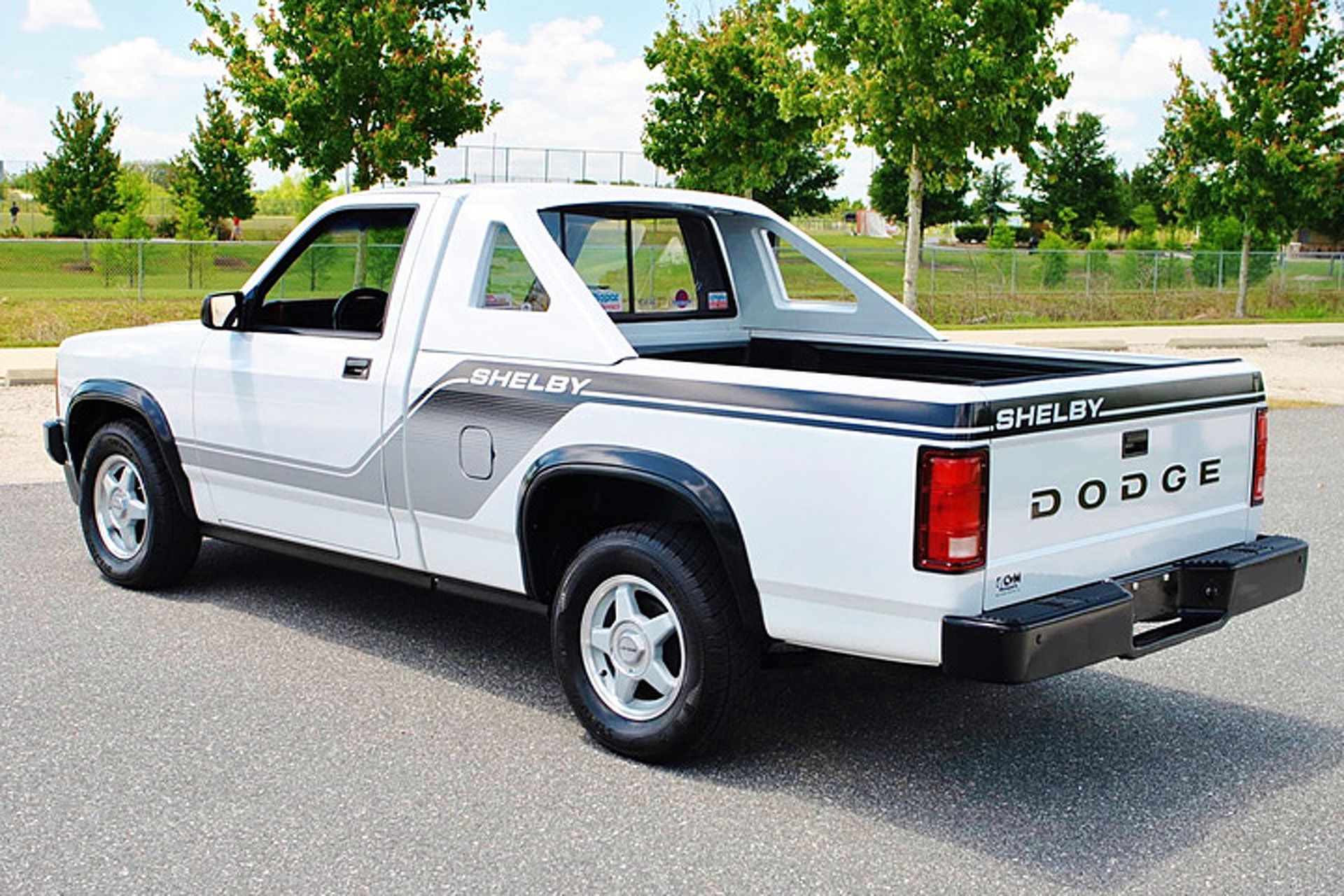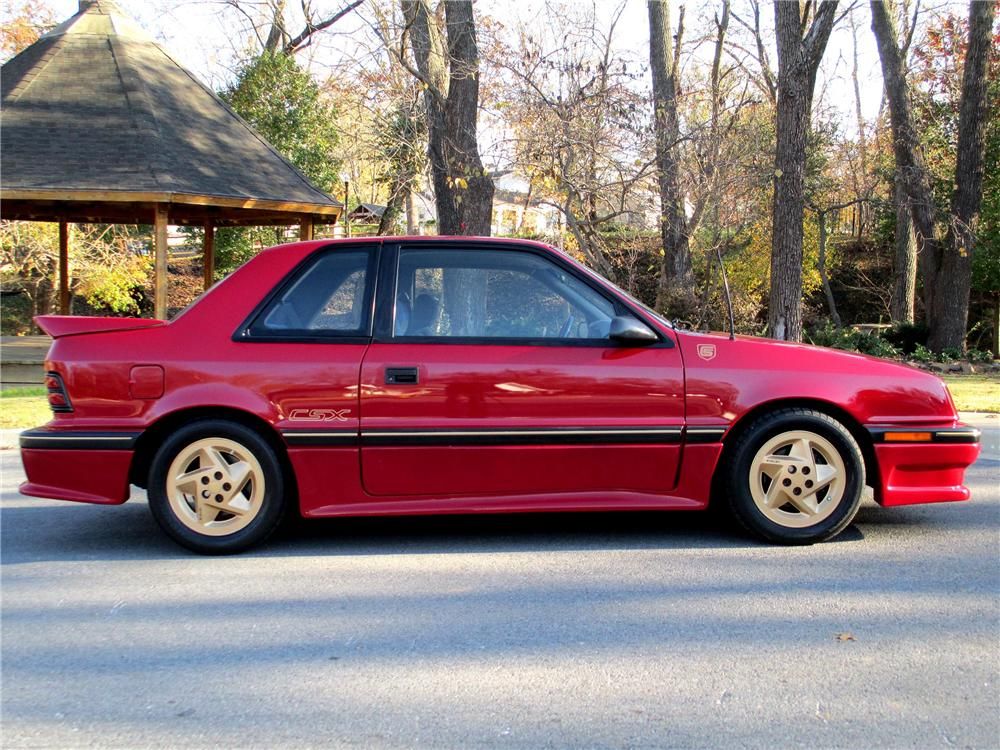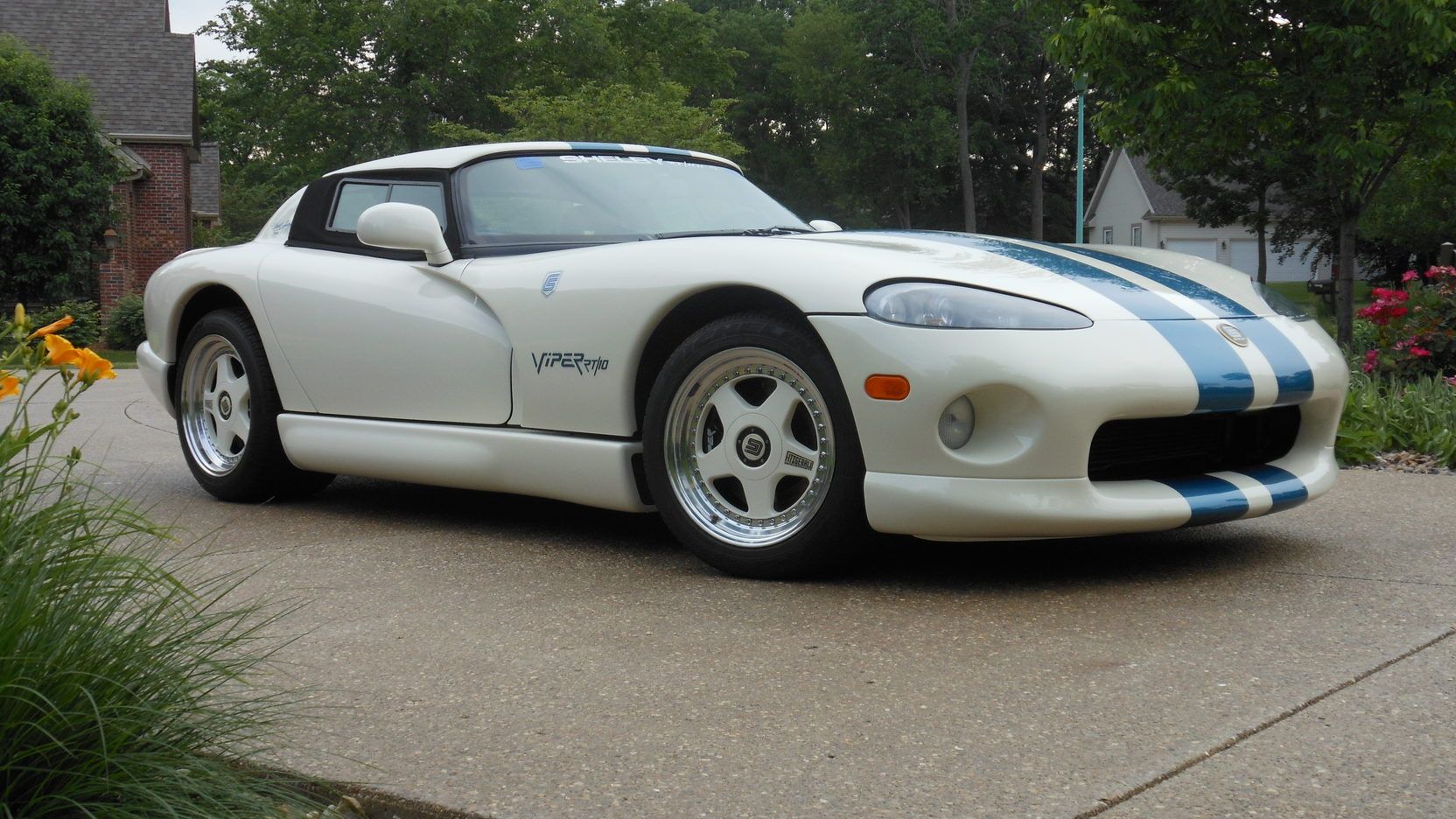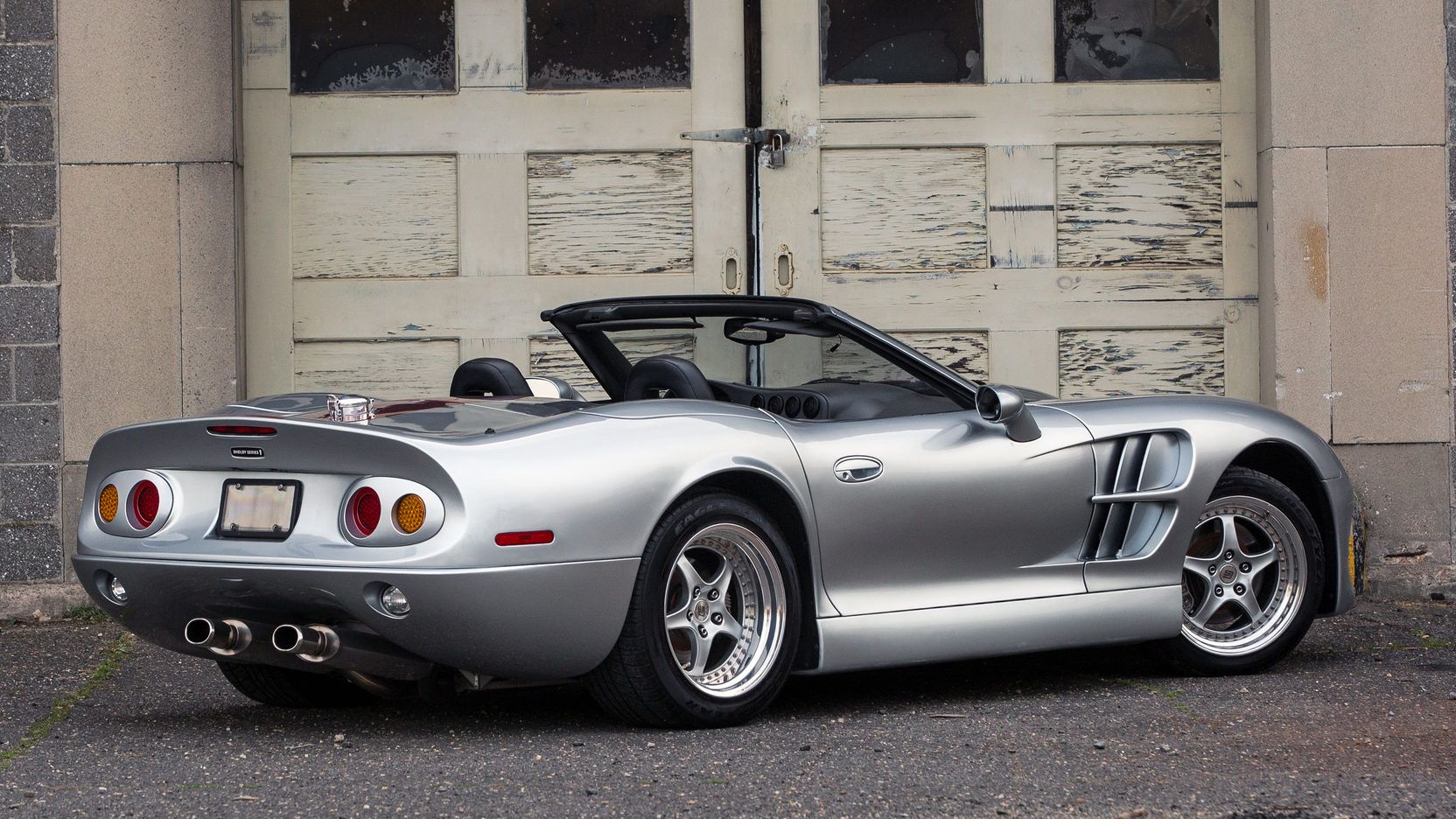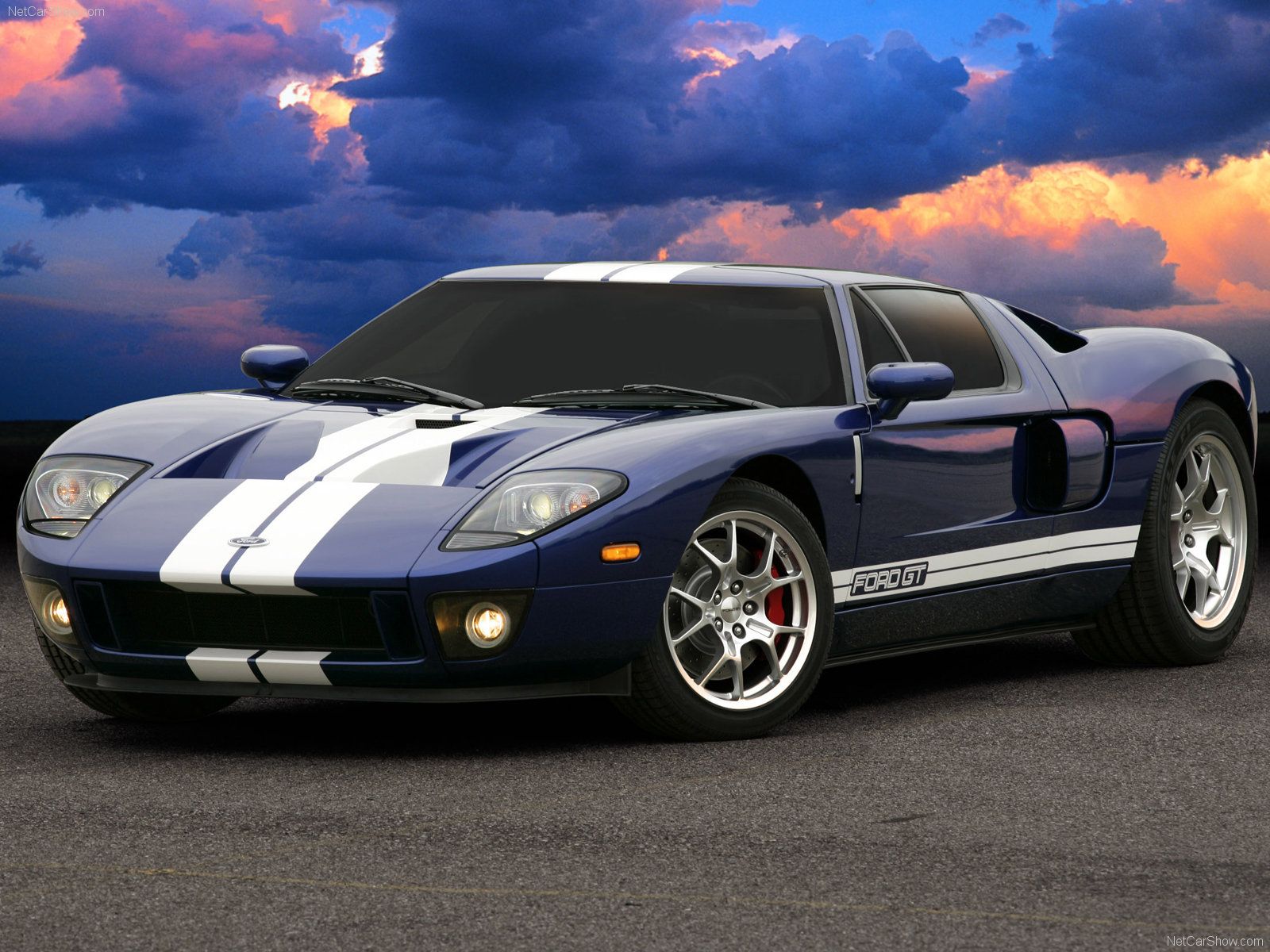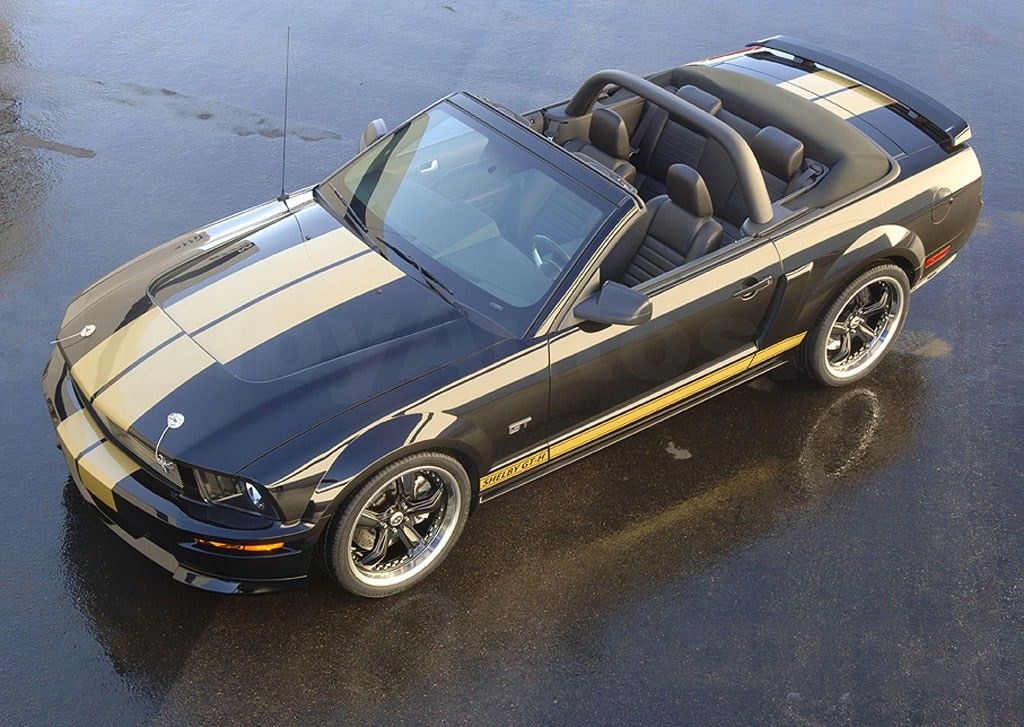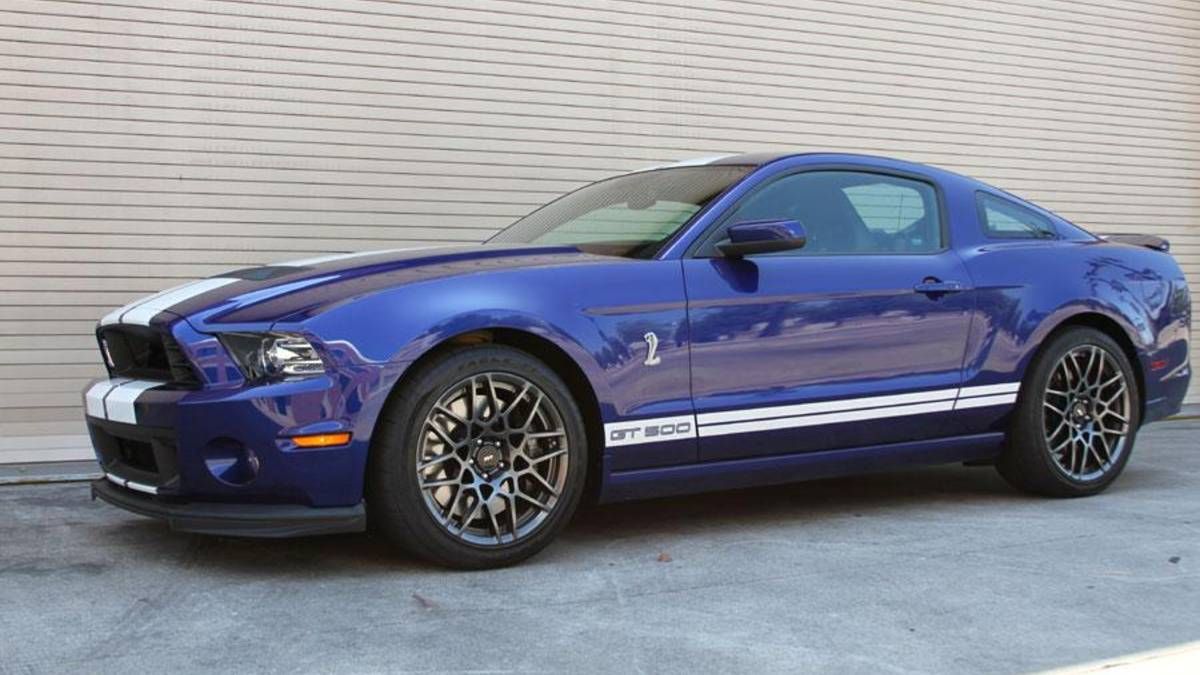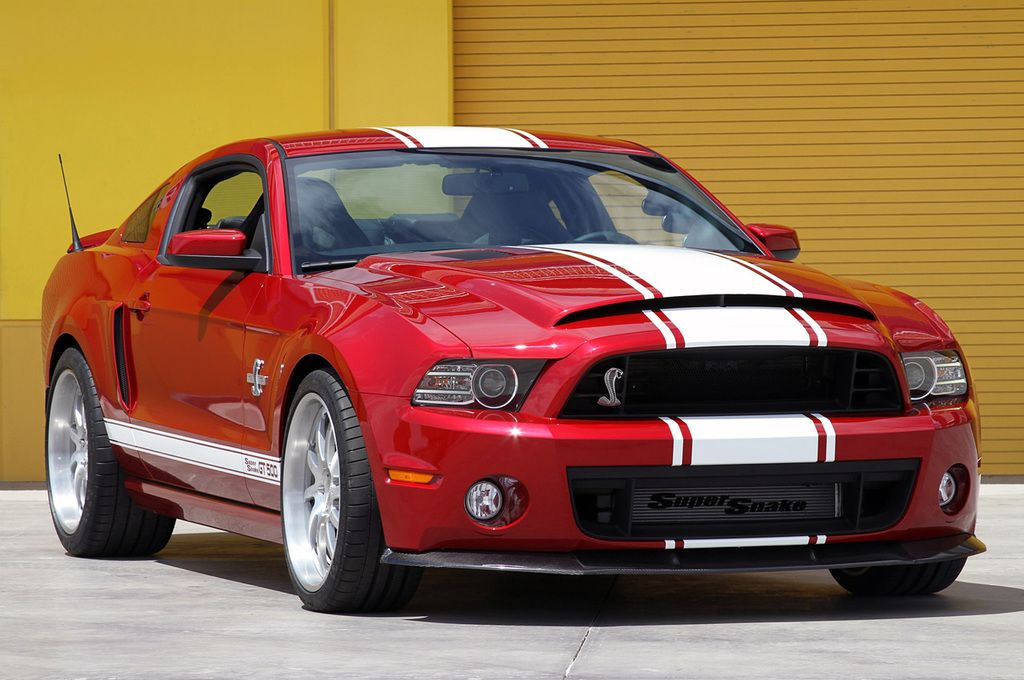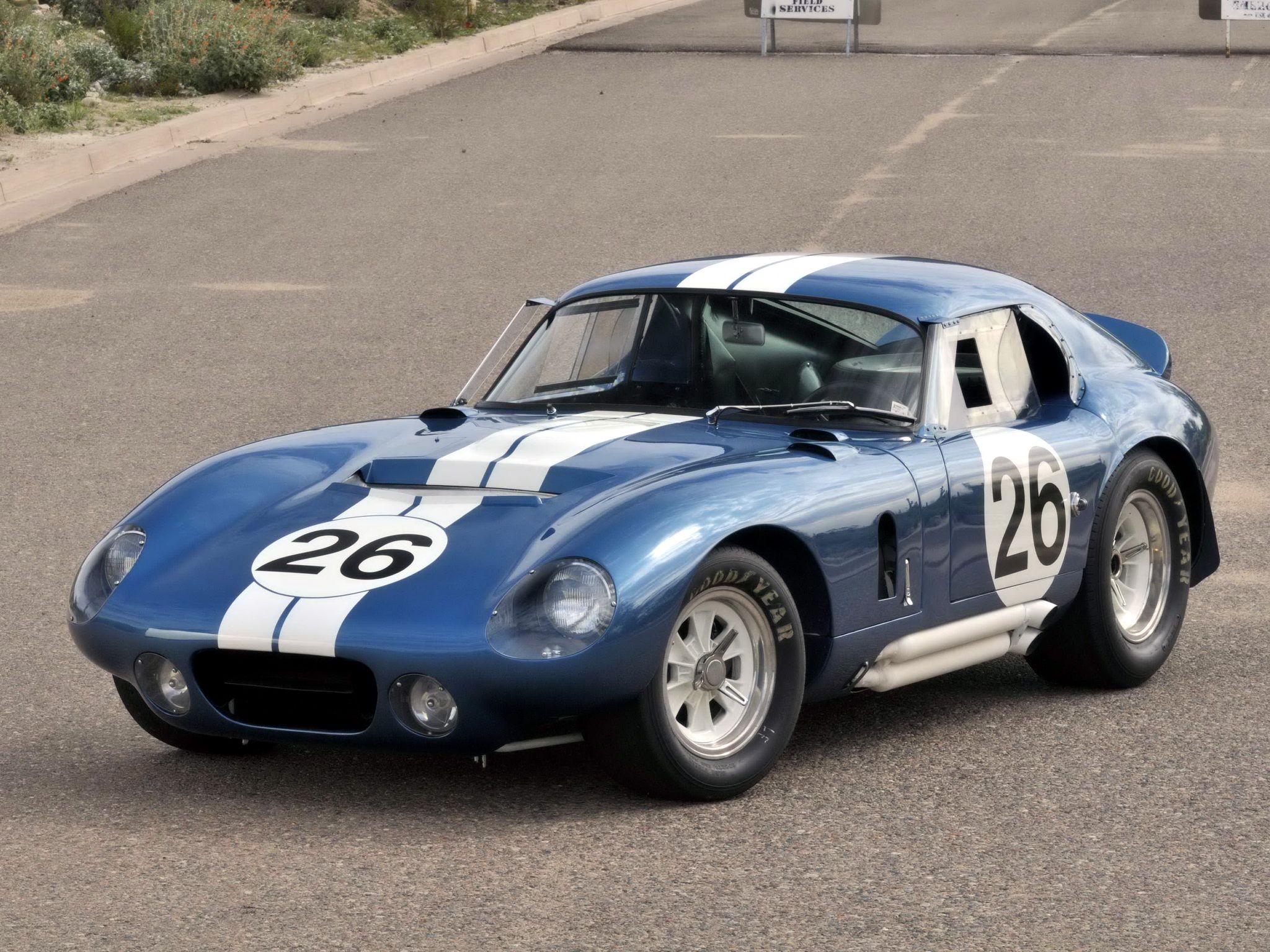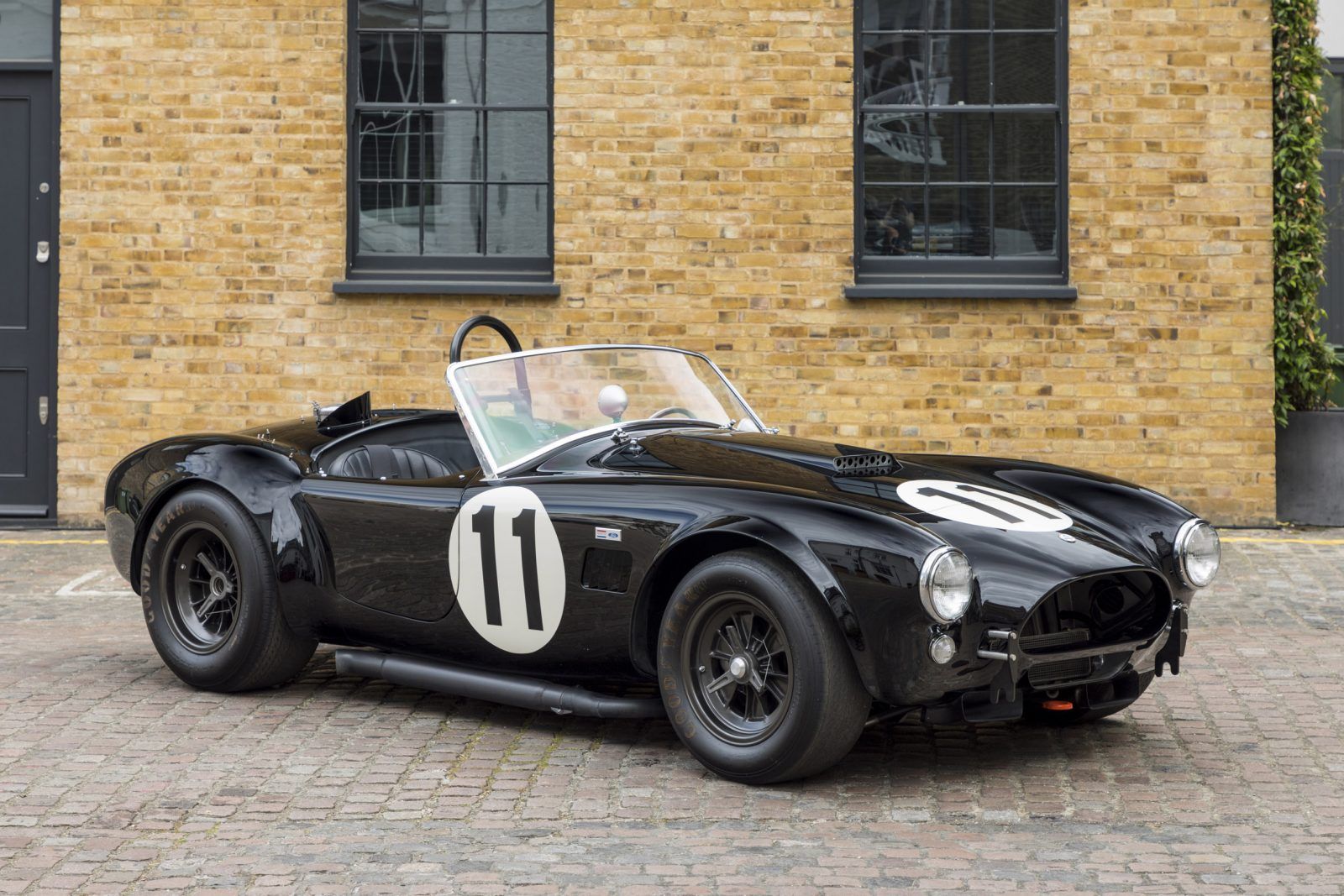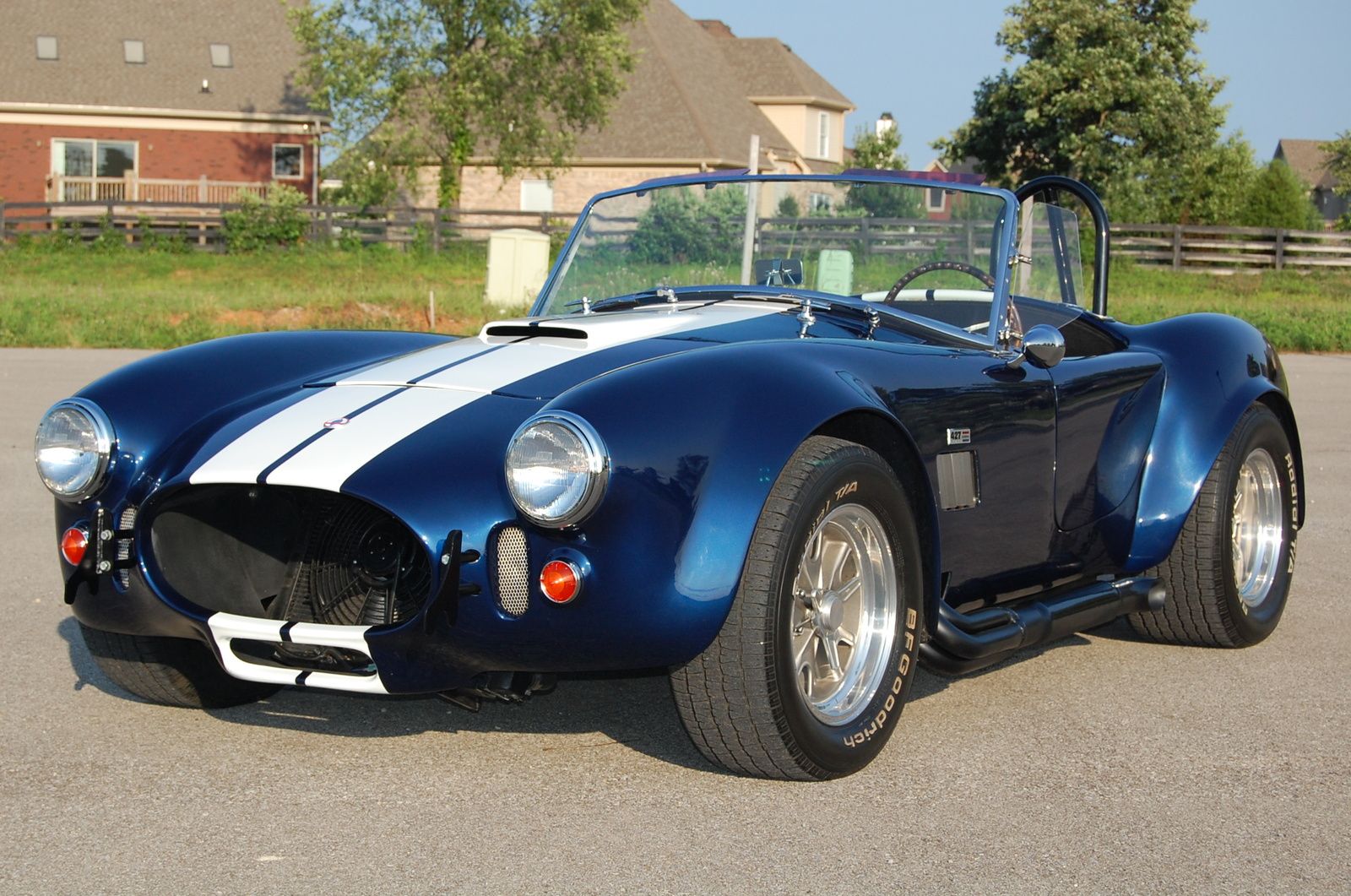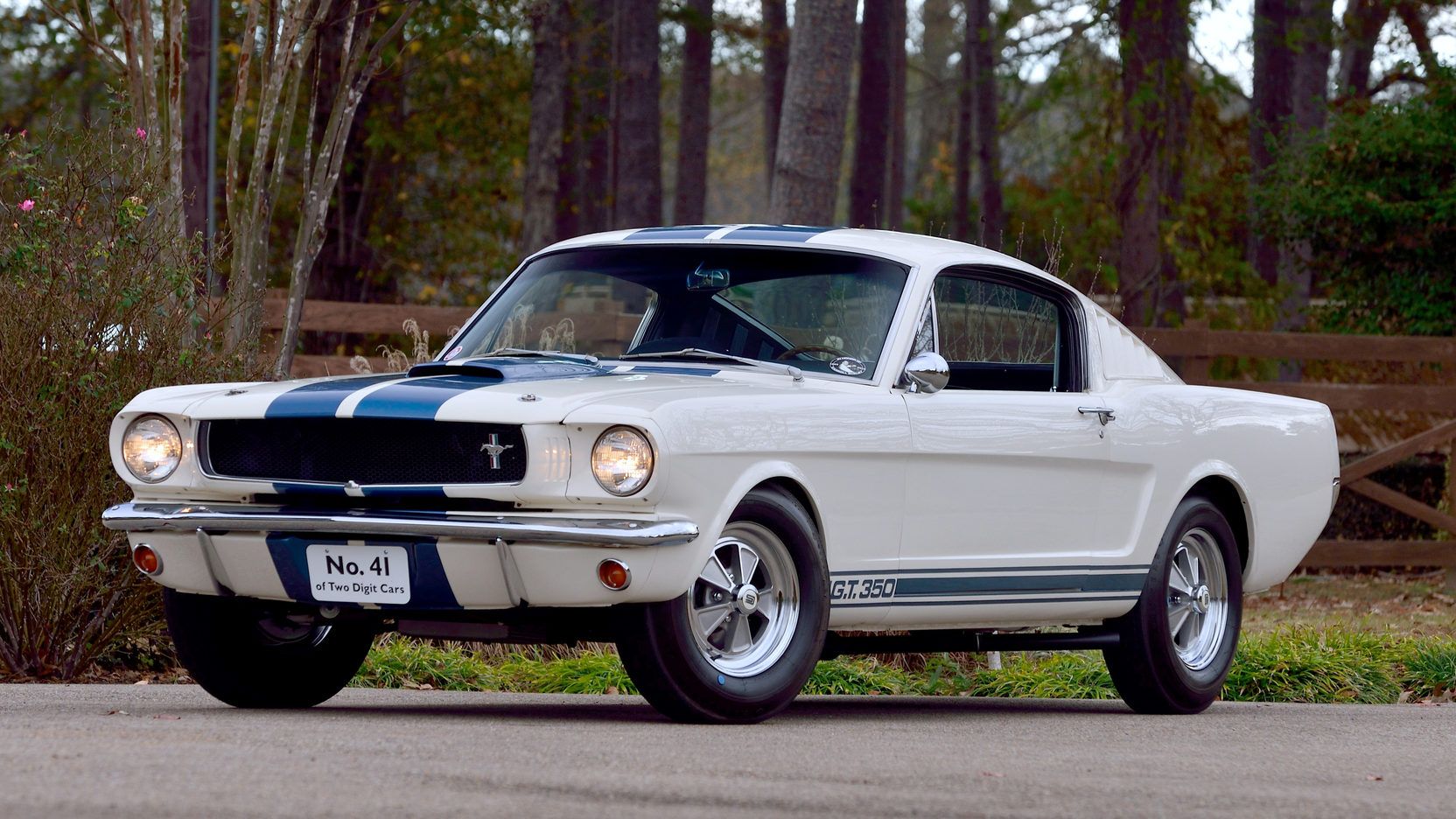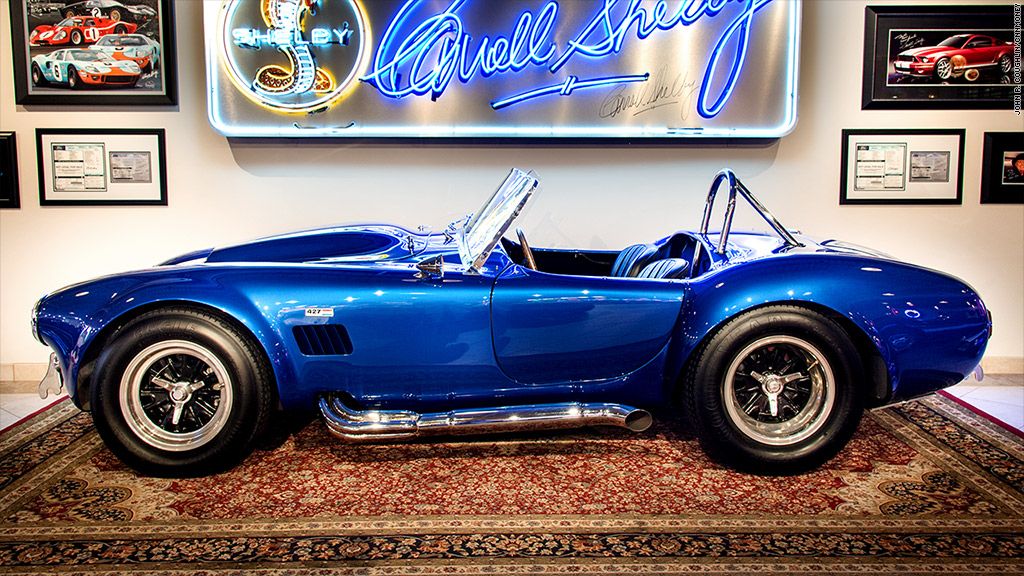Six years have passed since Carrol Shelby passed away, but he left a legacy in the sports car arena that still influences today’s high-performance vehicle designs.
He was an American racing driver, automotive designer, and entrepreneur. Best known for his development of the AC Cobra and his involvement with the Ford Mustang, he was also influential in the design of numerous Chrysler products from the late 1960s into the early 2000s.
In 1962 he established Shelby American Inc. to manufacture and sell performance vehicles, and in 1988 he created Carroll Shelby Licensing which grew into Carroll Shelby International.
The Ford-powered Cobra sports cars that regularly beat more sophisticated Chevrolet Corvettes and refined European-built Ferraris on the racetrack gained Shelby his initial notoriety and reputation as an innovator. However, it was Shelby’s success on the European circuit, beating the home turf competitors with a Ford GT40 at the 24 Hours of Le Mans in 1967 that cemented his legend status. Driven by A.J. Font, Jr. and Dan Gurney, it remains the only victory in the history of the famous French race to be won by an American-made race car driven by an American driver.
Although race cars made Shelby famous, the development and modification of production cars represent his most important contribution to automobile history.
That history, expanding almost 60 years, included many successes, but, as is the case with any successful business, some failures. The following are 15 cars that we consider the worst Shelby products ever made and 5 that we would spend a fortune to purchase, with the one caveat: most of Shelby’s worst cars are superior to their competitor’s products.
20 Worst: 1983 Dodge Shelby Charger
Although the Dodge Charger gained a reputation as a high-performance muscle car in the ‘60s, the 80’s version, even with Carroll Shelby’s modifications, was a disappointment.
Hemmings says, “Starting with the Charger’s 2.2-liter four-cylinder engine, [Shelby] bumped compression up to 9.6:1; added a slightly hotter camshaft; opened up the exhaust for better breathing; and retarded cam timing by four degrees to aid top-end performance. The net result was an increase in output to 107 horsepower and 127 pound-feet of torque, and with the aid of a close-ratio five-speed transmission, the Dodge Shelby Charger could run from 0-60 MPH in 9.0 seconds on the way to a top speed of 117 MPH. The quarter-mile went by in 16.8 seconds, at a speed of 82 MPH.”
These were mediocre performance numbers even for the ‘80s era.
19 Worst: Shelby Cobra CSX 2000
The Shelby Cobra may be the most significant car in the history of sports car design, and the CSX 2000 is the model that started it all.
The Ford small-block 260 cubic inch V8 with an acceleration of 0-60 mph in 4.2 seconds and a top speed of 153 mph, dropped into the chassis of an AC Ace roadster made it a serious competitor to the Corvette.
The CSX 2000 remained in Carroll Shelby's possession, untouched (many of the gauges no longer work, and the upholstery is in tatters) until it was auctioned in 2016. It sold for $17.7 million, setting a world record for the most expensive American-made car ever sold at auction.
18 Worst: 1964-69 Ford GT40
The first three Ford GT40 models, Mk I, Mk II, and Mk III were built in England and based upon the British Lola Mk6. The GT40 Mk IV model was designed and built entirely in the U.S.
When Carroll Shelby got involved with the design after early Ford racing failures, he equipped the Mk II with a different powertrain, the 427-cu. in. used in NASCAR at the time. The Mk II went into production after the '65 Le Mans race, and had immediate success, finishing 1-2-3-5 in the 1966 12 Hours of Sebring. The GT40 won four consecutive times from 1966 to 1969 at the 24 Hours of Le Mans.
The successful racing history of the GT40 has significantly contributed to its selling price. A 1968 Ford GT40 raced by Jacky Ickx at Daytona, set a record selling for $11 million in 2012 at a California auction.
17 Worst: 1986 Dodge Shelby GLH-S
Road and Track magazine wrote in 1986, “the Shelby is to Omni as the GT-350 was to Mustang. The GLH-S is the embodiment of Carroll's philosophy—a good thing made better."
When Lee Iacocca took over the reins at Chrysler, after his earlier days at Ford, he asked Carroll Shelby to help create a car to compete with the highly-successful Volkswagen Rabbit GTI.
Shelby used the same method he used with the Mustang. He took the very ordinary Dodge Omni hatchback and upgraded the engine and suspension.
The first ‘84 Shelby GLH (Goes Like Hell) produced only 110 hp. However, final ‘86 GLH-S was equipped with a 2.2 L turbo-four that produced 175 hp. Suspension changes included stiffer springs with Koni adjustable struts and shocks.
16 Worst: 1963 Cobra ‘Dragonsnake’
In 1963 Shelby offered an $8,000 Dragonsnake option for the Cobra converting it into a ¼-mile drag car. The drag pack, named “Dragonsnake” included several racing options that enabled the car to accelerate from 0 to 60 mph in a mere 5.5 seconds, faster than Ferraris (8 seconds) of that era.
Shelby produced only eight Dragonsnakes including a 427-equipped model and the CSX2093, which won 7 NHRA National events and is the winningest competition Cobra in drag history.
Offered at a Mecum Auction in Kissimmee, FL on January 26-30, 2011, the Cobra sold for $875,000. The Dragonsnake makes our worst list because the Cobra is a sports car and we believe it should handle curves as well as accelerate in a straight line.
15 Worst: 1987 Dodge Daytona Shelby
In 1987, the Pacifica, a front-wheel drive, 3-door hatchback, boasted luxury features including power-adjustable leather seats, power windows and locks along with a 4-cylinder, 2.2-liter Turbo I, 146-hp engine, but the Daytona Shelby Z was the real performer.
Restyled externally including pop-up headlights, the Daytona Shelby offered the newly designed 2.2-liter intercooled Turbo II engine producing 175 hp and an acceleration from 0-60 mph in eight seconds. Shelby added an air dam, performance tires, an improved suspension, and anti-sway bars.
Coupled with a new 5-speed transmission, the Shelby also offered an optional 3-speed auto transmission and came equipped with the same Pacific luxury features.
14 Worst: 1987 Shelby Lancer
Carroll Shelby is famous for his work with the Cobra, the Mustang, the Ford GT40 and even lesser-known models like the Dodge Omni GLH-S, but the Lancer gets less respect as a Shelby accomplishment, despite rivaling the Omni GLH-S' performance.
Not to be confused with the Dodge Lancer Shelby produced in 1988 and ’89, the 1987 Shelby Lancer sold under the Shelby name and featured performance comparable to many of its German contemporaries.
In 1983, several sources recorded a 7.2-second 0-60 mph time and skidpad G-forces peaking at 0.85. It outperformed the Porsche 928 number at 0.82, recorded by Car and Driver. It was a respectable performance for a 175 hp, front-wheel drive sedan from the 1980s.
13 Worst: 1989 Dodge Shelby Dakota Pickup
Carroll Shelby started with the standard mid-sized Dakota pickup, a standard cab, short-wheelbase, and short-bed. The original 3.9 L V6 engine was replaced with Dodge’s 5.2 L V8 with throttle-body injection, giving the truck 175 hp and 270 lb-ft of torque, and a 16.5-second quarter mile at 82 mph.
Only 995 trucks were built in red, and another 480 were painted in white. A fiberglass light bar and different paint options were the most significant upgrades, but unique wheels and trim, and individually numbered dash plaques declared it a Shelby product. The Shelby Dakota pickup was the highest-performing pickup truck for the 1989 model year, and it set the stage for later factory performance pickups like the Ford Lightning and the GMC Syclone.
12 Worst: 1989 Shelby CSX-VNT
The last Chrysler product design directly influenced by Carroll Shelby was the 1989 compact 3-door hatchback CSX-VNT (he provided consulting services later for the 1990s Viper).
Based on the economic Shadow ES, the CSX-VNT implemented Formula 1 technology with the use of the Garrett turbo. Variable Nozzle Technology or moving vanes, manage the quantity and velocity of exhaust gasses passing through the turbine, resulting in small turbo-like behavior that ramps up quickly at low engine rpm, and reduces turbo lag.
At higher engine rpm, the vanes open to allow more air volume to pass at a lower airspeed, giving it bigger turbo characteristics. Computer management of the VNT vanes controls the boost level.
While rated at the same 175 hp as the standard Turbo II, Shelby’s engine produced 205 lb-ft. of torque with a broader and flatter power curve, making it easier to drive.
11 Worst: 1996 Dodge Viper Carroll Shelby RT/10
Carroll Shelby collaborated with Dodge and Fitzgerald Motorsports to produce only 19 Carroll Shelby Special Edition Vipers.
The Lamborghini Company, then owned by Chrysler Corporation, designed the 8.0 Liter aluminum V10 manufactured by recasting block and heads in an aluminum alloy. Coupled to a 6-speed manual overdrive transmission, the engine produces a peak 415 hp at 4,100 rpm and a peak torque of 480 lb-ft at 3,600 rpm.
The Viper is equipped with tubular design front and rear sway bars, four-wheel independent suspension with unequal upper and lower control arms, and coilover double acting gas shocks. RWD with limited-slip differential, energy absorbing tilt steering column, power-assisted rack & pinion steering, and power assisted 4-wheel vented disc brakes round out the list of high-performance features.
10 Worst: 1999-2005 Shelby Series 1
Carroll Shelby’s modus operandi for creating high-performance cars was to re-engineer and modify models produced by other manufacturers, with one exception. The Shelby Series 1 is the only car ever designed, engineered, and built entirely by Carroll Shelby.
Initially conceived as a successor to the Shelby Cobra, design work began in 1994 on the Series 1 promising 500 hp, a rear-mounted Corvette C5 transaxle, a carbon-fiber body, with a total weight of 2,650 lbs.
However, the result was a car that weighed nearly 3,000 pounds and was powered by an Oldsmobile Aurora V8. Even with the extra weight, it produced 320 hp and accelerated from 0-60 mph in a mere 4.4 seconds with a top speed of 170 mph.
In 1999, only 249 Series 1 cars were produced. In successive years the car was sold as "a component car, " a kit delivered with no engine or transmission to avoid an expensive Federal Motor Vehicle Safety Standards certification.
9 Worst: 2003-2006 Ford GT
Although the GT is similar in outward appearance to the original Ford GT40, structurally, they are very different. The Ford GT features many technologies unique at its time including aluminum body panels, superplastic-formed frame, and longitudinally-mounted rear mid-engine, rear-wheel-drive layout, all-aluminum alloy modular longitudinally-mounted 5.4-Liter mid-engine V8 with an Eaton 2300 Lysholm screw-type supercharger.
Carroll Shelby, the original designer of the Shelby GT 500, was brought in by Ford to help develop the Ford GT and conduct performance testing of the prototype car.
The demand was high for the production version and several early cars sold for as much as a $100,000 over the suggested retail price of $139,995. As a result, Ford increased the MSRP to $149,995 in July of 2005.
8 Worst: 2006 Shelby Mustang GT-H
In 1965 the Shelby company created a program with Hertz to offer the 1966 GT350H Mustang as a rental car. Both Ford and Shelby benefited as it worked to promote the Shelby Mustang to potential buyers. Ford stated, “The idea was to put high-performance, special-edition Shelby Mustang coupes into the hands of racing enthusiast-minded rental customers.”
Shelby, Ford, and Hertz teamed up again in 2006 to create a new "Rent-A-Racer," program with the Shelby GT-H.
The GT-H included the Ford Racing FR1 Power Pack with a cold-air intake, muffler set, unique X-pipes, and the FR3 Handling Pack with thicker sway bars, lowering springs, and specially tuned dampers.
All 500 of the unique Shelbys went exclusively to Hertz rental car agencies as part of their “Fun Collection.”
7 Worst: 2010-2013 Shelby GT500
For the 2010-2012 model years, the Shelby GT500 was clearly the best-performing car to ever wear the Shelby name. The suspension is agile and responsive, and the supercharged 5.8-liter V8 cranks out an astonishing 550 hp.
Road and Track wrote: “What Ford's done immensely right here is the GT500's engine. Its V-8 is as big as it can be, having its aluminum block bored to its maximum intended size of 5.8 liters, only 350 cc less than Chevy's 6.2-liter mill. On top of that, literally, are twincam heads with four valves per cylinder. It breathes heavy and offers greater potential than the straightforward pushrod V-8 of the LSA.”
The 2013 GT500 got an improved suspension and an even bigger engine with 662 hp., making it the embodiment of all prior Shelby cars in a modern package.
6 Worst: 2013 Shelby Ford Mustang GT500
The 2013 Mustang Shelby GT500 was the last Shelby-named road car the late Carroll Shelby saw launched. At the time, Ford confirmed the power rating at 662 hp, claiming it’s “the most powerful production V8 engine in the world.”
Carroll Shelby would have been happy to know that a one-off tribute car was also created in his honor. A group called the "Friends of Carroll Shelby," consisting of several firms including the likes of Ford, Shelby American, and Ford Racing built the car based on the 2013 Ford Mustang Shelby GT500.
Unveiled at the 2012 Pebble Beach Concours d'Elegance, the special Mustang was a hit for its significance to the automotive world, distinctive styling, and impressive performance credentials. Nicknamed the Shelby GT500 Cobra, the car's 5.8-liter V-8 engine delivers a breathtaking 850 horsepower.
5 Worth a Fortune: 1964-'65 Cobra Daytona Coupe
Although the original Shelby Cobra with its small-block Ford V8 had been a sports car racing success in the U.S., its European experience was different. The roadster design lacked the aerodynamic features required to compete with the Ferrari 250 GTO on fast European racetracks.
So, Shelby and his design engineers took the basic Cobra chassis and created a new super-slick body, the Cobra Daytona Coupe. The coupe won the GT class at the Sebring 12 Hours and at the 1964 Hours of Le Mans, ending Ferrari’s domination of GT-class sports car racing in Europe.
Between 1964 and 1965, only six Shelby Daytona Coupes were built, mainly because Shelby took on the Ford GT40 project. The Shelby Daytona Cobra Coupe placed in the top 100 most expensive cars sold at auction by original price for $7,685,000.
4 Worth a Fortune: 1964 Cobra 289 (Mark II)
When car enthusiasts in the 1950s lamented the absence of an American sports car, Carrol Shelby, known for his racing success, winning Le Mans in 1959 driving an Aston Martin, came up with the solution. His idea was to put a light-weight V8 in a lightweight British car, the AC Cobra.
For his first model, the Mk I, he chose the 260-cubic-inch Ford V8 but upgraded to the 289-cubic-inch engine for the Mk II. The V8 produced only 271 hp, but it was enough to challenge the Ferraris and Corvettes once installed in the lightweight, 2,000-pound British roadster.
In 2018 Cobra 289s have sold at an average price of $1,409,645 with a high of $1,774,290; worth every dollar for a car with such a significant influence on sports car racing.
3 Worth a Fortune: 1965-'67 Cobra 427 (Mark III)
In 1965 Car and Driver tested the new Cobra 427 (list price of $7,000) and recorded an acceleration to 60 mph in a remarkable 4.3 seconds. It reached 100 mph in only 8.8 seconds, and blew by the quarter-mile in 12.2 seconds traveling at 118 mph. The magazine also claimed the cobra would accelerate from a dead stop to 100 mph and then brake to a dead stop again in a mere 14.5 seconds.
Despite the Cobra 427’s impressive performance, a Ford-designed suspension with coil springs, and double-wishbone-type control arms at each corner, it wasn't a sales success in 1967. Today, however, sales are few, but the prices are high. Although a 1967 Cobra 427 sold for as little as $40,700 in 2015, the average sales price in 2018 is $1,045,000.
2 Worth a Fortune: 1965-'66 Mustang GT350
Assigned with the task of converting a highly successful 1964 Ford Mustang with a Ford Falcon economy car structure into a sports car, Carroll Shelby went to work on both the engine and the suspension. He added a Holley carburetor to the 271-hp 289-cubic-inch V8, a close-ratio Borg-Warner 4-speed manual tranny, exhaust headers and an exhaust system that dumped out just forward of the rear wheels. Output improved to 306 hp. Perhaps more important than the powertrain, the Shelby suspension gave the GT350 its outstanding handling characteristics with stiff antiroll bars, Koni shocks, oversize rear drum brakes, 11-inch front disc brakes, and 15-inch Goodyear Blue Dot tires.
In 1965, Shelby made 562 GT350s, all but one was painted Wimbledon White with blue stripes. For the 1996 model year, 1,001 GT350H models were built as Hertz rental cars. In 2018 the average auction sales price for the GT350 is $356,500.
1 Worth a Fortune: 1966 Shelby Cobra 427 “Super Snake”
The ’66 Shelby Cobra “Super Snake” is one of 23 originals that were built, although only two were made in the Super Snake mold. This 800-horsepower sports car labeled CSX 3015, was the private transportation of Carroll Shelby and is the only one that survived.
Shelby said, "When I built this dual supercharged 427 Cobra in 1966, I wanted it to be the fastest, meanest car on the road," Shelby said on the Barrett-Jackson Web site. "Forty years later, it will still kick the tail of just about anything in the world. It's the fastest street legal Cobra I've ever owned." Shelby pegged the car's 0-60-mph time at just over three seconds.
At a 2007 Barrett-Jackson auction in Scottsdale, it sold for $5.5 million.
Sources: edmunds.com, automobile-catalog.com, supercars.net, topspeed.com, thedrive.com

